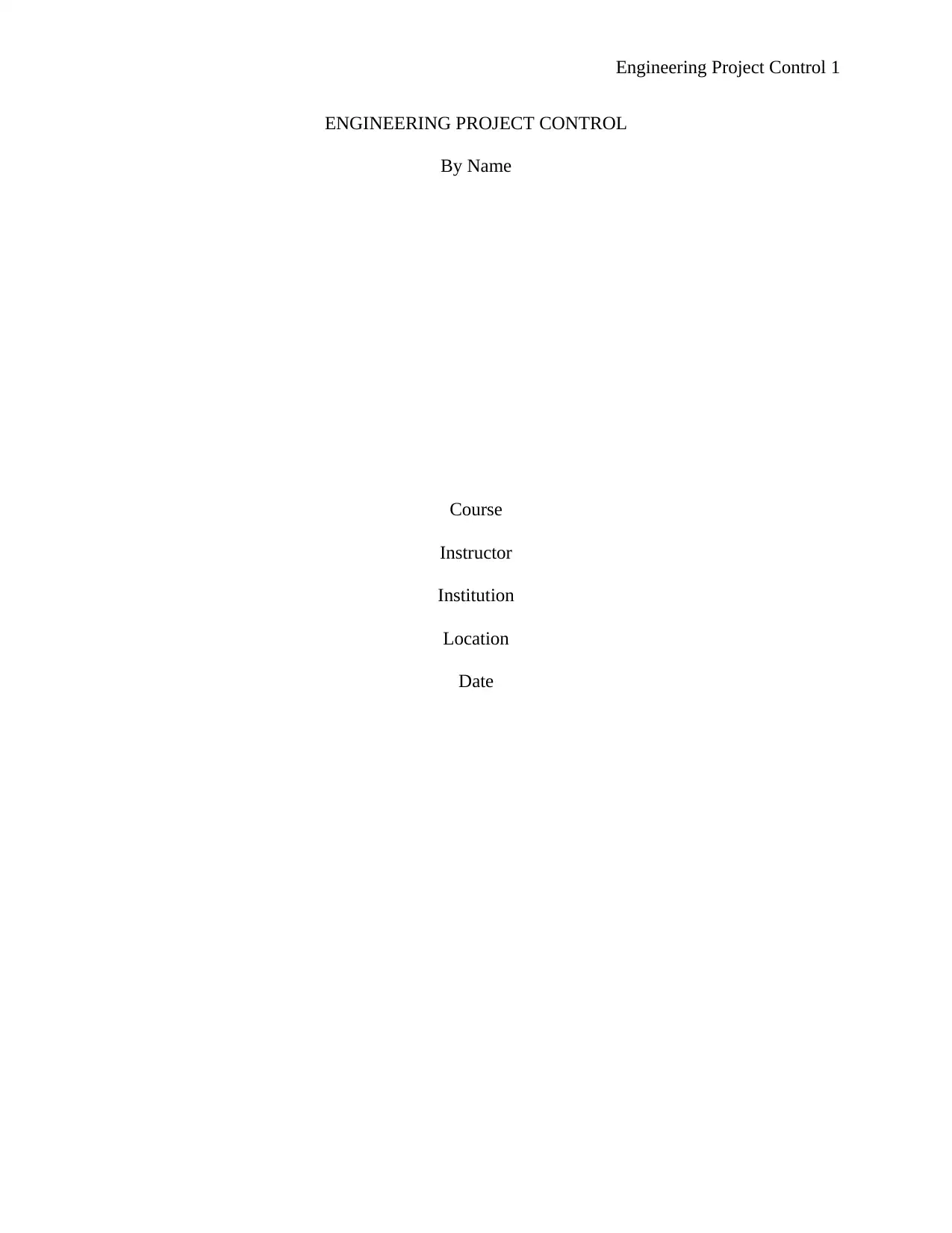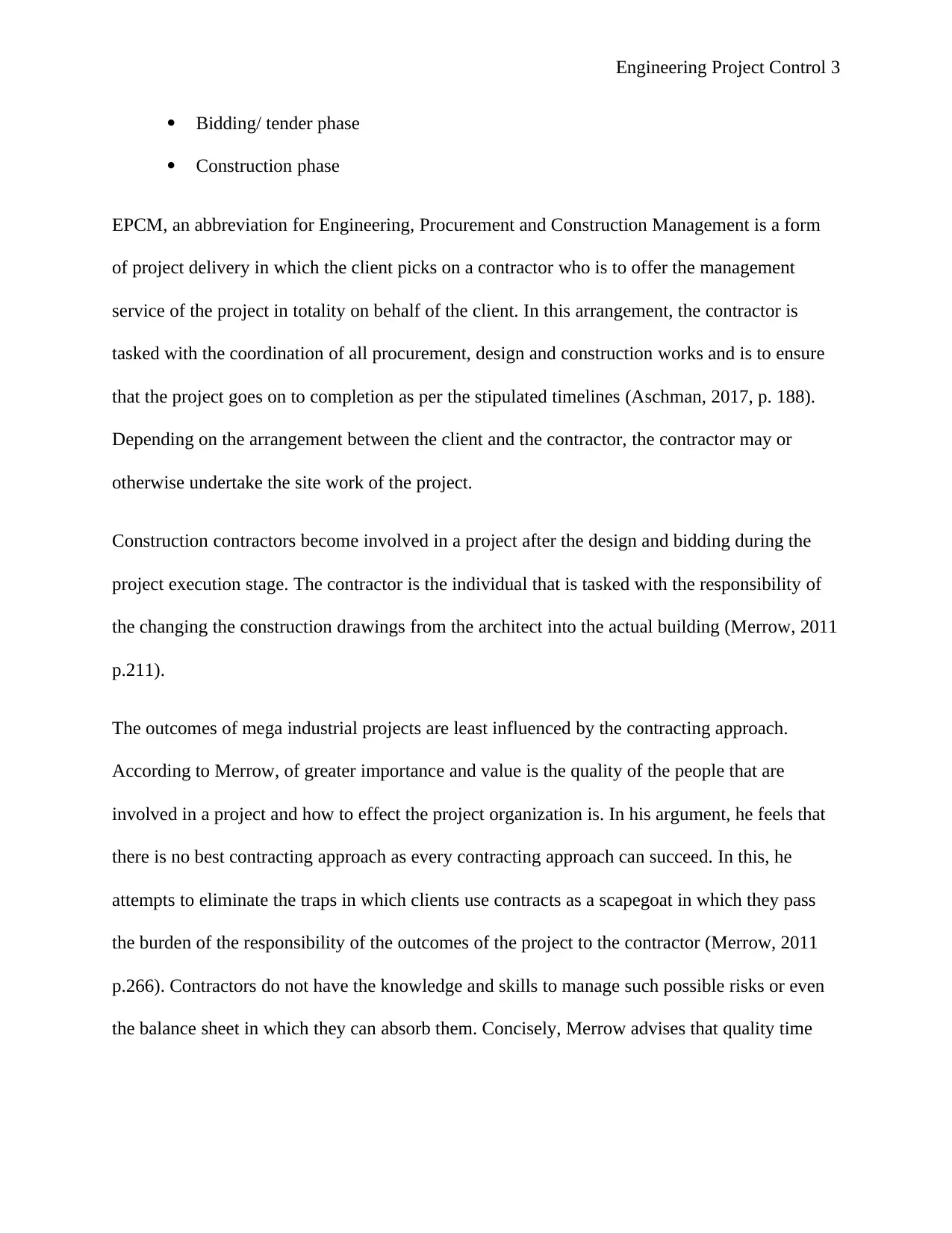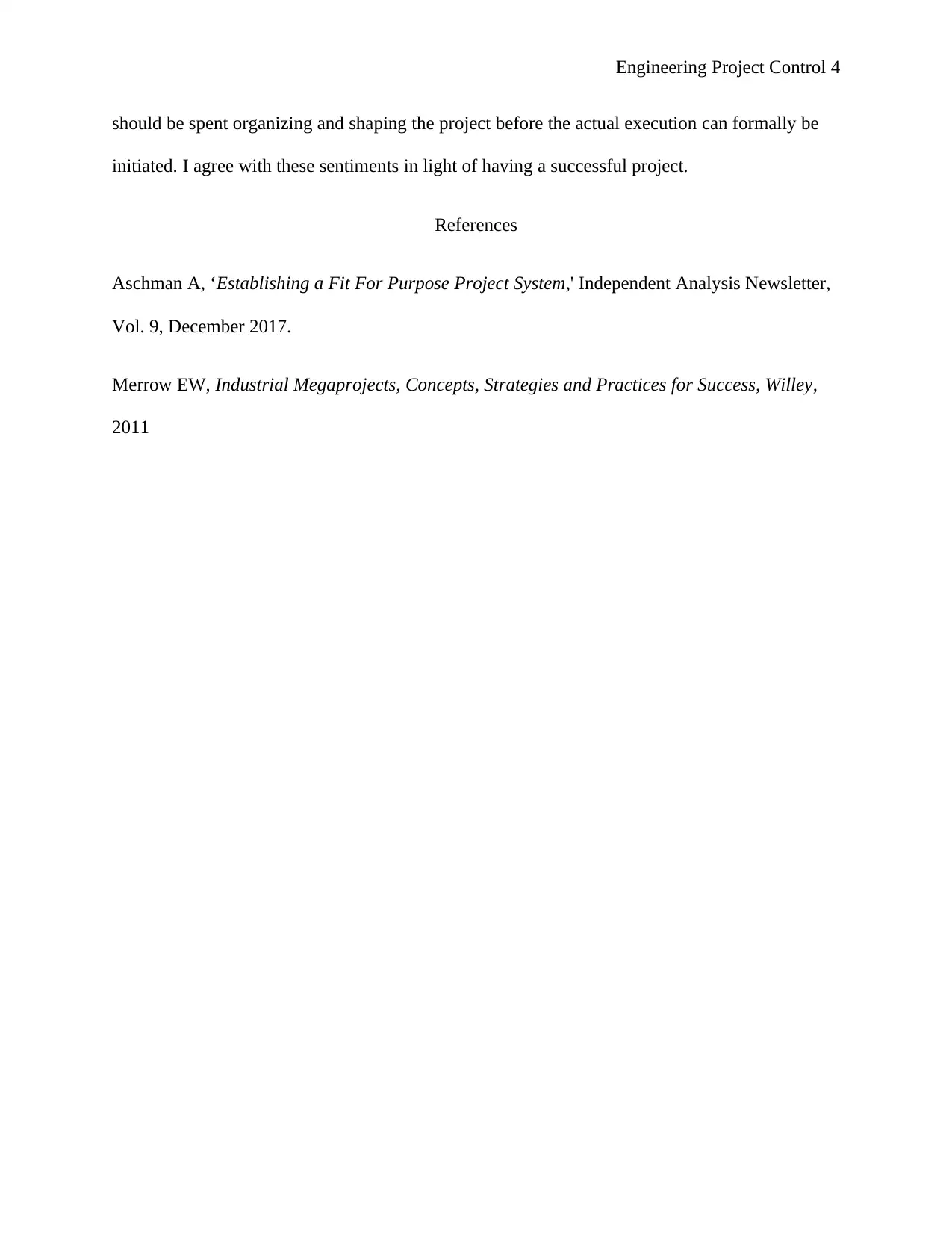Project Governance and Management Report - Engineering Course
VerifiedAdded on 2021/04/21
|4
|660
|29
Report
AI Summary
This report explores the critical aspects of project governance within the engineering domain, examining various project delivery methods and their implications. It delves into key concepts such as project governance, design-build, EPCM (Engineering, Procurement, and Construction Management), and the role of construction contractors. The report highlights the importance of pre-project planning, often referred to as front-end loading, and its significance in the success of industrial projects. It discusses the traditional design-bid-build method and contrasts it with other approaches. The report also emphasizes the significance of the quality of project personnel and organizational structure over the contracting approach, aligning with the views of Merrow (2011). The report concludes by advocating for comprehensive project organization and planning prior to execution to improve project outcomes. The report references Aschman (2017) and Merrow (2011) to support its claims.
1 out of 4









![[object Object]](/_next/static/media/star-bottom.7253800d.svg)